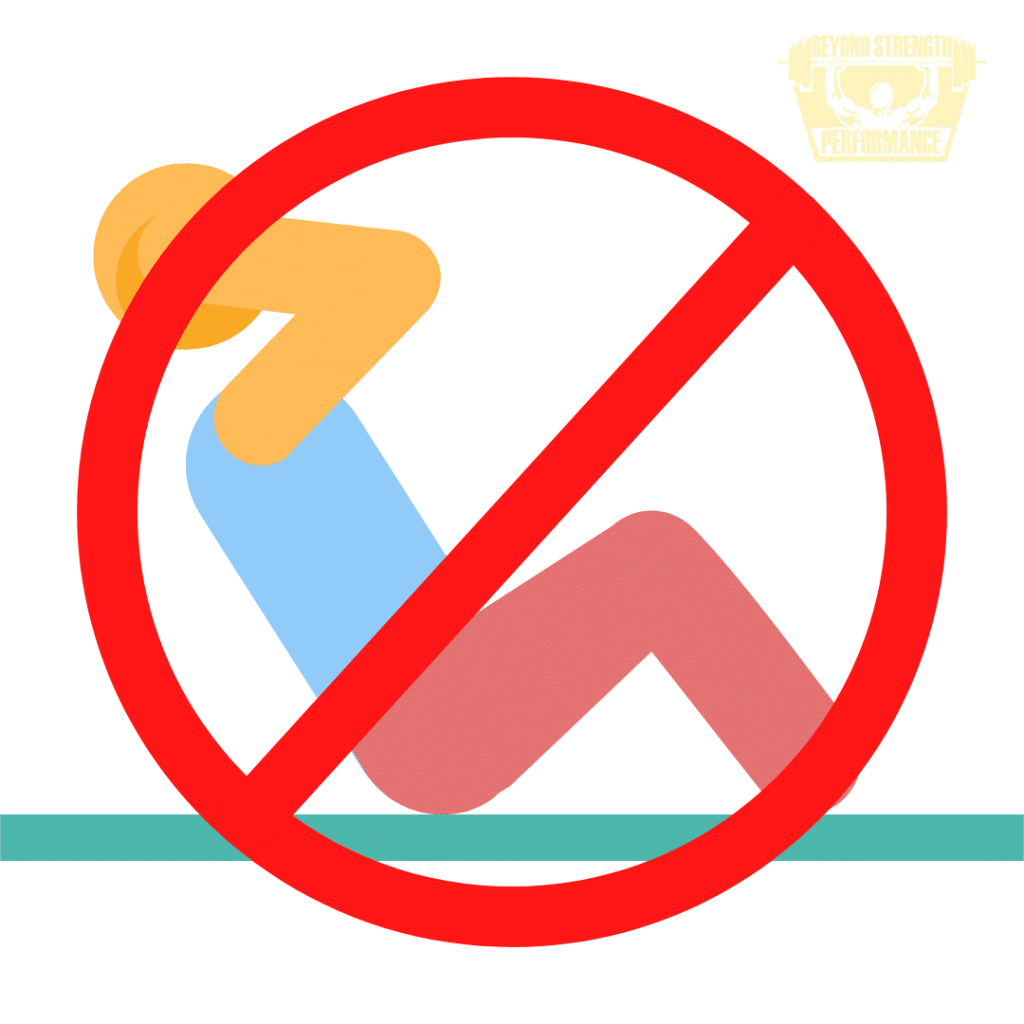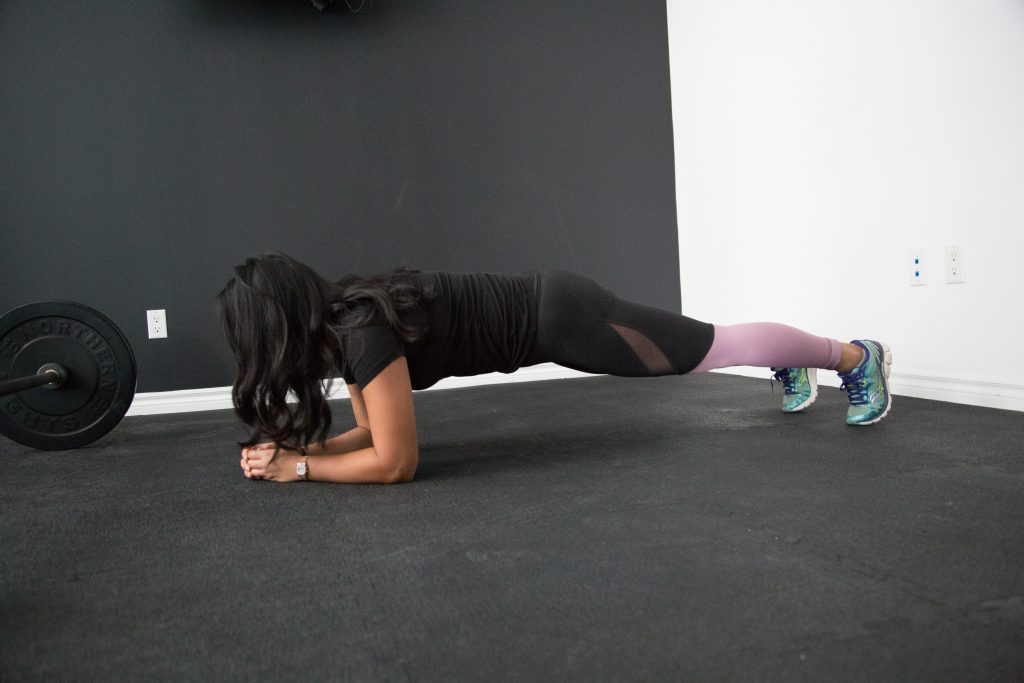When you think of doing an exercise for your core, what exercise comes to mind first?
Here is my guess: you pictured laying on your back, knees bent and hands behind your head while pulling your chests towards your knees.
Am I right? You pictured a sit up?
This is normal. A common thought is, core exercise = sit ups.
In addition to thinking of our core training as doing sit ups, we tend to think of our core as the muscles that make up our six pack—the rectus abdominus (to use sciencey words). Instead of everything else our “core” encompasses. Simply put, our core is this: our torso—everything not including our legs and arms, and our neck and head.
This means the core does much more than just flex forward over and over—and this is a good thing. If core training was one muscle group, or one action, like flexing forward, training would get boring fairly quick I’d imagine.
In this way, sit ups miss the mark. They train the rectus abdominus, and miss everything else. Also, they don’t train our core to move in the way it’s best built for; which I’ll discuss soon. This is why there’s a better way to train the core than sit ups.
So, what is this method of core training that is more effective than sit ups?
A method that, in addition to a good nutrition plan, can help that six pack show.
What is this style of training?
It’s anti-core training.

Why Anti-Core Training?
The core encompasses far more than our six pack muscles. By only doing sit ups, we don’t fully train our entire core.
With anti-core training we don’t create motion, we resist motion.
Think of a plank. The goal of the plank is not to move our torso, as in a sit up, but to maintain position. Gravity is trying to force our lower back to arch, to go into a macho man position (as we say at BSP), but we resist that motion while performing the plank, and we maintain position.
Sure, the core is able to flex forward and bend and twist, which all has its place, but controlling our torso is key.
Why?
Because when performing an exercise in the gym, whether that’s a deadlift, squat, or lunge, we must maintain position as we move; not only for safety’s sake, but to produce the most force. No core stability means we’re not in the best position to be successful. For example, rounding your back while deadlifting is not only less safe, but you will produce less force in that position.
So, we cool on that—on how anti-core exercises are what is best suited to get our core stronger? Cool.
At this point though, I can hear some of you thinking, “Okay, I get anti-core training can be helpful, but what exercises am I supposed to do?”
That’s fair. I want to help answer that. So, let’s take a look at some common movements with tips on performing them. Also, included is a “core training” program that you can do as well (if you’d like to skip straight to the program, then feel free to do so—it’s at the end of this blog).

We can think of anti-core training in four different ways or categories:
- Anti-Extension
- Anti-Rotation
- Anti-Flexion
- Anti-Lateral Flexion
Anti-Extension
Anti-extension exercises train us to resist going into extension (we resist arching our lower back). It’s also the most common type of anti-core exercise that we do.
Here are a couple examples of anti-extension exercises:
Push-Up Position Plank tips:
- Start at the top of a push-up
- Hands are under your shoulders with your “imaginary belt buckle tilted towards your chin”
- Goal is to maintain a tall and tight position—body is in a straight line from head to heel
Dead Bugs tips:
- Laying on your back, raise you legs and arms off the ground to form ninety-degree angles
- Tilt your imaginary belt buckle to your chin to make your lower back flush with the floor
- Reach your opposite arm and leg out without the position of your lower back changing
Anti-Rotation
Anti-rotation exercises have you—yup, you guessed it—resisting rotation. Something is trying to rotate your torso, but you stay locked in place.
Here are a couple examples of common anti-rotation movements:
Pallof Press Tips:
- Attach a band to a rack/door at the height of your chest, and stand with your feet roughly shoulder width apart
- Keeping your tall and tight position, reach your arms directly in front of you without letting your torso rotate
½ Kneeling Pallof Press tips:
- Attach a band to a rack/door
- The band should be at chest height while in a half kneeling position
- With your outside leg forward, press the band straight out without letting your torso rotate
Anti-Flexion
Anti-flexion movements are movements where we resist going into flexion. This can sometimes be harder to picture, but an easy example to understand it is the deadlift. When we deadlift, whether with a barbell, kettlebell, or whatever, a weight is trying to pull us forward. We’re resisting that weight’s pull forward while staying tall and tight.
Another example is a Farmer Carry.
Farmer Carry tips:
- Grab two weights, get into a tall and tight position, and walk
Anti-Lateral Flexion
Anti-lateral flexion exercises help us develop the strength to resist lateral flexion. Which begs the question: what the heck is lateral flexion? Think of lateral flexion as a side bend.
Here are a few examples of anti-lateral flexion exercises:
Side Plank tips:
- Lay on your side with your elbow underneath your shoulder
- Drive your elbow through the floor as your raise your hips off the ground
- Your body should be in a straight line from head to foot
Suitcase Carry tips:
- Grab a weight on one side of the body, stay tall and tight, and walk
A Core Training Program That Works
The following core training program includes various types of anti-core exercises, since it can be beneficial to do a variety of types, instead of one type over and over.
A quick note on how to read the program:
- The exercises are done in a circuit. So, A1 is done first, then A2, then A3. That is one set. You will then do two to four sets total of each.
- Each exercise starts with the easiest variation, and the bullets underneath of them are increasing in difficulty.
- The “2-3” indicates the number of sets to perform. The number on the right indicates the amount of time to perform the exercise, or the number of reps to do.
- A “/” means the exercise is done per side.
- Alternate the workout days each time you do them. For example, do workout A on your first day, then workout B on your second. The program could be done 3-5 days per week if desired.
Workout A
| Exercise Name | Sets x Reps | |
| A1. | Leopard Crawl Iso | 2-4 X :20-:30
2-4 X :20-:30 2-4 x 4-8/ |
| A2. | Farmer Carry | 2-4 X :30-:45 |
| A3. | Side Plank w/ Bent Knee | 2-4 X :15-:30/
2-4 X :15-:30/ |
Workout B
| Exercise Name | Sets x Reps | |
| A1. | Dead Bugs—Legs Only | 2-4 x 4-8/
2-4 x 4-8/ 2-4 x 4-8/ |
| A2. | Standing Pallof Press | 2-4 x 8/
2-4 x 8/ |
| A3. | Suitcase Carry | 2-4 x :30-:45/ |
In Summary
Remember, with all of these movements, we are focusing on maintaining position of our torso; we stay tall and tight. The goal is to resist movement in our torso, not create it.
Also, if you don’t feel up to doing the whole program above, then just pick one exercise to start. And if you’re unsure of what to pick, then here’s my recommendation: start with an anti-extension exercise or two. Those are easiest to perform and, once you feel comfortable with those, it makes learning the others and working up to the full program easier.
Regardless of what you choose, tossing in some anti-core exercises will help you get the stronger core you’ve been hoping for. And, if having a six pack or toned stomach is your thing, then—along with a solid nutrition approach—these anti-core exercises will help.
